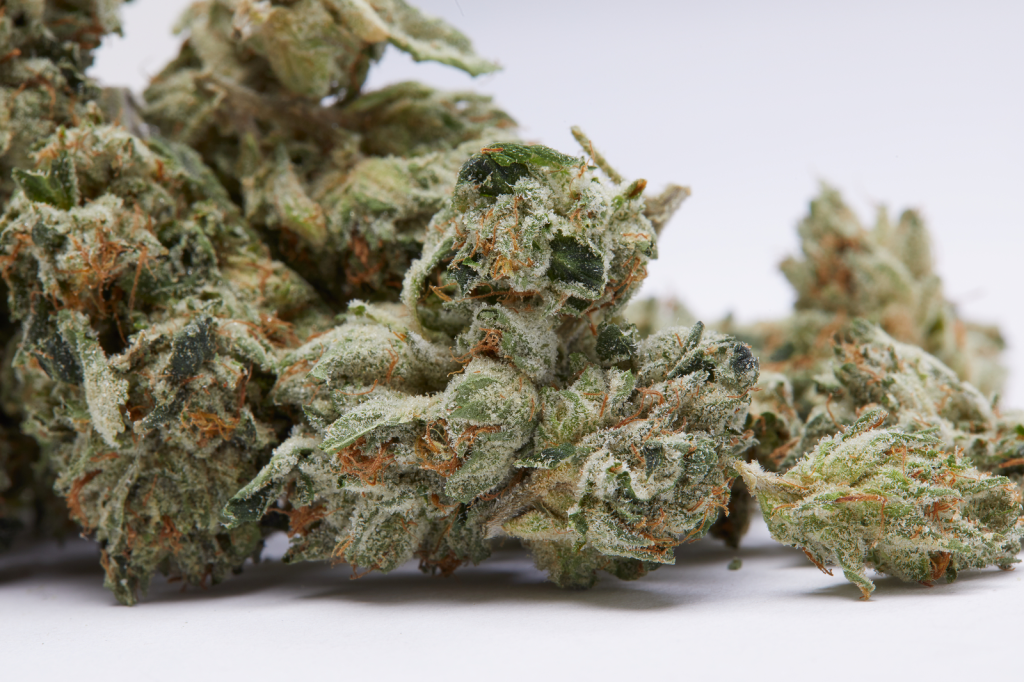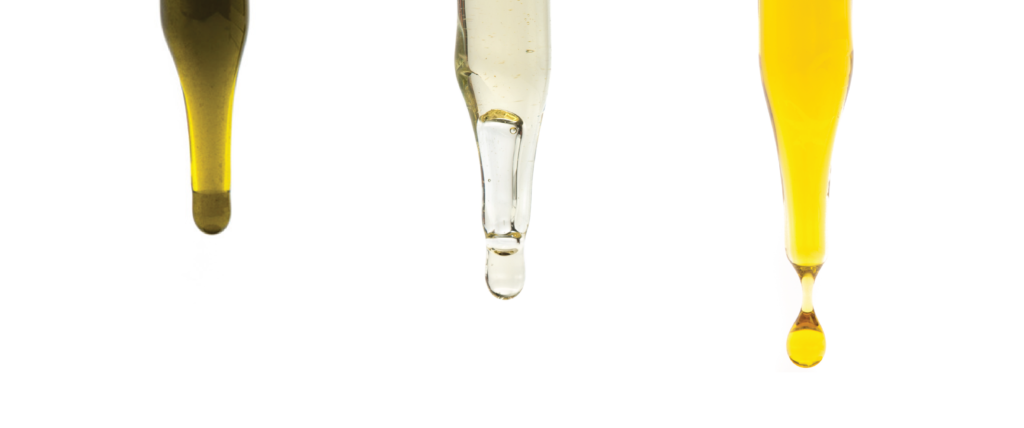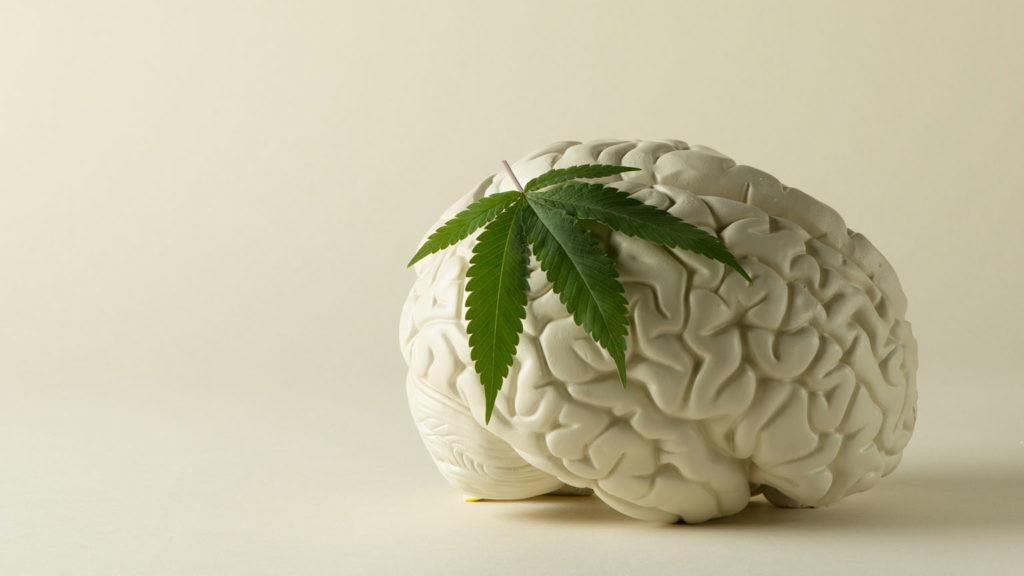Rick Simpson Oil — also referred to as RSO — is a concentrated form of cannabis oil that was originally created by Canadian engineer Rick Simpson. It's made by extracting essential compounds found in the cannabis plant, including THC, CBD, and other cannabinoids. The oil is typically thick, dark in color, and has a high concentration of these active compounds.
RSO has gained popularity with some medical cannabis consumers for its purported benefits, including soothing chronic pain and inflammation. However, scientific evidence supporting these claims is limited, and further research is needed to determine the efficacy and safety of RSO as a medicinal treatment.
Why did Rick Simpson make RSO?
In 2003, Simpson was diagnosed with basal cell carcinoma. After the diagnosis, he read a study from the Journal of the National Cancer Institute that showed that THC appeared to reduce the growth of tumor cells in mice. Simpson had prior experience using cannabis to treat tinnitus and dizziness — both conditions caused by a fall — so he explored cannabis oil as a potential treatment for his skin cancer.
 Photo by: Gina Coleman/Weedmaps
Photo by: Gina Coleman/WeedmapsImage lightbox

Simpson claimed he made a homemade extract, applied it directly to the cancerous moles, and covered them with bandages. When he removed the bandages four days later, the growths were gone. He began growing and cultivating cannabis to perfect a custom oil blend. He also created a YouTube documentary, Run From the Cure, and wrote a book, The Rick Simpson Story.
Until 2009, when he was ordered to stop for legal reasons, he handed out RSO for free. Simpson moved from Canada to Europe in 2013 and suffered a stroke in 2018, an event he continues to recover from.
Potential benefits of RSO
Although scientific research is limited, some anecdotal evidence and preliminary studies suggest that RSO may provide relief for various conditions.
Potential benefits include:
- Anti-inflammatory effects: RSO contains cannabinoids like THC and CBD, which have anti-inflammatory properties, according to some research. It may help with conditions like arthritis, other inflammatory disorders, and chronic pain.
- Anti-cancer properties: There is preliminary evidence from cell culture and animal studies suggesting that certain cannabinoids in RSO, such as THC and CBD, may have anti-cancer effects. However, more research is needed to determine the efficacy and safety of using RSO for cancer treatment in humans.
- Anxiety and stress relief: There's some anecdotal evidence suggesting that RSO may help alleviate anxiety and stress among cannabis patients, possibly due to the presence of cannabinoids like CBD, which may have anxiolytic properties.
Note that scientific evidence supporting these claims is limited, and more research is needed to validate the potential benefits of RSO. The effects of RSO also vary depending on the individual, specific formulation, and concentration of cannabinoids.
Potential risks of RSO
While RSO has gained popularity as a potential alternative treatment for various conditions, it's essential to be aware of the risks and side effects associated with its use.
Some risks include:
- Marked and prolonged intoxication: 1 gram (about 1 ml) of RSO can contain 200 - 900 mg of THC. Most THC tinctures contain about 5 - 50 mg of THC making them easier to dose for new or inexperienced users. Most experts recommend not using RSO unless you have some experience using THC products.
- Limited scientific evidence: The claims made about RSO's therapeutic benefits are mainly based on anecdotal evidence. Scientific research supporting these claims is limited and focused on the efficacy of cannabinoids in general. More studies are needed to determine the efficacy and safety of RSO as a medical treatment.
- Side effects: RSO's very high THC content can lead to side effects such as dizziness, drowsiness, anxiety, paranoia, impaired memory, dry mouth, dry eyes, increased heart rate, and changes in appetite. Additionally, some studies have shown that while CBD may help with sleep, THC might impair sleep in the long term.
- Drug interactions: RSO may interact with other medications, increasing or decreasing its effectiveness. It's essential to consult with a healthcare professional before using RSO, especially if you are taking other medications.
Along with the physical risks listed above, making RSO at home can be dangerous due to the use of flammable solvents. There's a risk of fire or explosion if proper precautions are not taken. Additionally, homemade RSO may contain impurities or residual solvents, which may be harmful to health.
How to make RSO
The extraction process involves a solvent, usually isopropyl alcohol or ethanol, to dissolve the trichomes — the resinous part of the plant that contains cannabinoids. The solvent is then evaporated, leaving behind a concentrated cannabis oil.
Disclaimer: In many places in the US, it's illegal for non-professionals to produce solvent-based concentrates like RSO. Additionally, making RSO is dangerous because nearby sparks, lit cigarettes, or open flames can ignite the solvent fumes and cause explosions. It's advisable to avoid making RSO altogether and buy cannabis concentrates from a licensed vendor instead. If there are no licensed vendors in your area, consider making solventless extracts at home, such as rosin. Or, you can try your hand at making cannabutter or canna-oil.
For educational purposes, here's a basic outline of the process for making RSO:
Materials
- Cannabis — preferably high-quality, organically-grown buds
- Solvent — 99% isopropyl alcohol or food-grade ethanol
- Large container
- Wooden spoon
- Strainer or cheesecloth
- Rice cooker
- Syringe or similar tool
- Heat-resistant container
Instructions
- Prepare cannabis: Break down the cannabis into small pieces, but don't grind it too finely. Washing the plant material with water can help remove surface impurities before extraction.
- Soak cannabis in solvent: Place the cannabis in a large container and pour the solvent over it until fully submerged. Use the wooden spoon to mix and agitate the cannabis and solvent for about 3 - 5 minutes. This will help dissolve the cannabinoids and other compounds into the solvent.
- Strain mixture: Separate the plant material from the solvent using a strainer or cheesecloth. Collect the solvent in another container and discard the leftover plant material.
- Purge solvent: Pour the solvent into a rice cooker and heat it at a low temperature, around 210 - 230°F (100 - 110°C). As the solvent evaporates, the cannabis oil will concentrate at the bottom of the cooker. Do not use an open flame, and ensure proper ventilation to avoid fires and harmful fumes.
- Collect oil: Once the solvent has evaporated completely, the remaining thick, dark oil is the RSO. Use a syringe or a similar tool to collect the oil and transfer it to a heat-resistant container.
- Store: Keep the RSO in an airtight container, preferably in a cool, dark place, to preserve its potency.
How to use RSO
Most people use RSO in the following ways:
- Topical rubbed onto the surface of the skin for potential pain relief
- Sublingual (under the tongue) for the fastest absorption rate
- Capsules taken orally for slow-acting effects that last longer
- Supplement added to cooked food or beverages
How to dose RSO
Simpson made dosage recommendations on his website that have not been vetted by medical researchers. Dosages vary from person to person depending on many factors, including the potency of the RSO, which Simpson claims is 80 - 90% THC. It's best to start low, go slow to see what suits your body, and consult a healthcare professional before starting any RSO regimen.
FAQ
What's the difference between RSO and CBD oil?
CBD oil is derived from hemp plants and only contains cannabidiol. RSO, on the other hand, usually has a high concentration of THC — at least 20%. It also includes the full range of cannabinoids found in the cannabis plant. It's important to distinguish RSO from other products labeled as hemp oil and hempseed oil, as these products don't often contain any CBD or THC, and RSO is highly intoxicating due to its MMa.
Is RSO considered a full-spectrum cannabis oil?
Full-spectrum cannabis oil (FSCO) includes the full range of bioactive compounds found in cannabis without altering their composition. This includes flavonoids, phenols, fatty acids, and — most importantly — various terpenes and cannabinoids in their natural acid form.
While the RSO process extracts the full range of compounds, removing the solvent from the solution requires heat. Heat changes the cannabinoids from their acid form to their activated form by decarboxylation. THCA and CBDA decarboxylate into THC and CBD during this chemical process. The heat also volatilizes most of the terpenes that were initially extracted, leaving an oil that may not have all the bioactive compounds available in the plant's trichome glands.
How much does RSO cost?
RSO can range from $30 to $60 per gram or more. However, prices vary depending on several factors, including the quality of the flower, concentration of cannabinoids, production process, and regional market conditions. Additionally, the legality of cannabis in your state or county may impact the availability and pricing of RSO.
Can RSO cure cancer?
While some anecdotal evidence and preliminary studies suggest that cannabinoids like THC and CBD might have anti-cancer properties, there is not enough scientific evidence to support the claim that RSO can cure cancer. The medical and scientific communities must conduct much more research before anyone can make anti-cancer claims about RSO.
Always consult with a healthcare professional for appropriate cancer treatment options.
Can you smoke or dab RSO?
Yes, RSO can be dabbed or smoked, but it's not recommended since it's incredibly sticky and the high temperatures used to heat it can burn off some of the cannabinoids and make it not as potent as other concentrates.
If you choose to smoke RSO, it's best to pair about a single rice-sized amount with flower either in a bowl or wrapped into a joint. If you choose to dab, ensure that the RSO you have is from a reputable brand with lab test results that make clear that it does not contain any leftover solvents.
Can you cook with RSO?
You can cook with RSO, but it's not recommended since cooking cannabis above 300°F will burn off the beneficial elements of RSO. It's best to pair RSO with already-cooked foods or blend it into smoothies, sauces, etc.
This article was reviewed by Bonni Goldstein, MD, a physician specializing in cannabis medicine in Los Angeles, California, owner and medical director of CannaCenters, and medical advisor to Weedmaps.com.
Sources
Volkow, N. D., Baler, R. D., Compton, W. M., & Weiss, S. R. (2014). Adverse health effects of marijuana use. New England Journal of Medicine, 370(23), 2219-2227.
Monte, A. A., Shelton, S. K., Mills, E., Saben, J., Hopkinson, A., Sonn, B., ... & Abbott, D. (2019). Acute illness associated with cannabis use, by route of exposure: An observational study. Annals of Internal Medicine, 170(8), 531-537.
Stout, S. M., & Cimino, N. M. (2014). Exogenous cannabinoids as substrates, inhibitors, and inducers of human drug metabolizing enzymes: a systematic review. Drug Metabolism Reviews, 46(1), 86-95.
Ramaekers, J. G., Berghaus, G., Van Laar, M., & Drummer, O. H. (2004). Dose-related risk of motor vehicle crashes after cannabis use. Drug and Alcohol Dependence, 73(2), 109-119.
Russo, E. B. (2008). Cannabinoids in the management of difficult to treat pain. Therapeutics and Clinical Risk Management, 4(1), 245-259.
Nagarkatti, P., Pandey, R., Rieder, S. A., Hegde, V. L., & Nagarkatti, M. (2009). Cannabinoids as novel anti-inflammatory drugs. Future Medicinal Chemistry, 1(7), 1333-1349.
Babson, K. A., Sottile, J., & Morabito, D. (2017). Cannabis, cannabinoids, and sleep: a review of the literature. Current Psychiatry Reports, 19(4), 23.
Velasco, G., Sánchez, C., & Guzmán, M. (2012). Towards the use of cannabinoids as antitumour agents. Nature Reviews Cancer, 12(6), 436-444.
Massi, P., Solinas, M., Cinquina, V., & Parolaro, D. (2013). Cannabidiol as a potential anticancer drug. British Journal of Clinical Pharmacology, 75(2), 303-312.
Timpone, J. G., Wright, D. J., Li, N., Egorin, M. J., Enama, M. E., Mayers, J., & Galetto, G. (1997). The safety and pharmacokinetics of single-agent and combination therapy with megestrol acetate and dronabinol for the treatment of HIV wasting syndrome. AIDS Research and Human Retroviruses, 13(4), 305-315.
Blessing, E. M., Steenkamp, M. M., Manzanares, J., & Marmar, C. R. (2015). Cannabidiol as a potential treatment for anxiety disorders. Neurotherapeutics, 12(4), 825-836.
Featured image by Gina Coleman/Weedmaps




